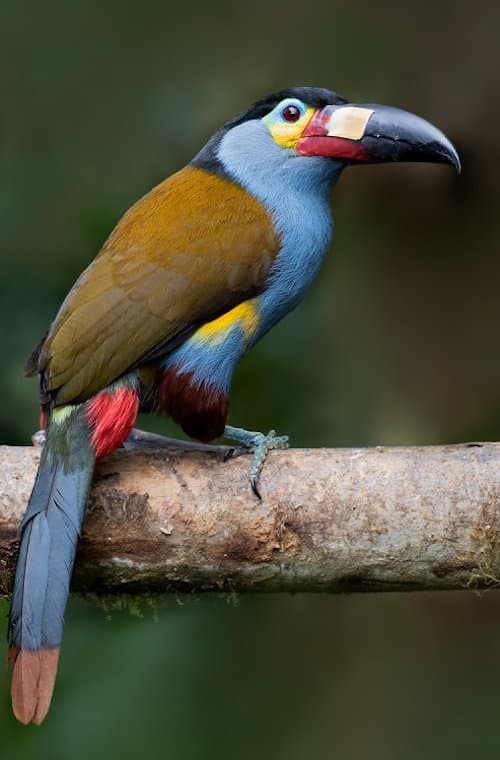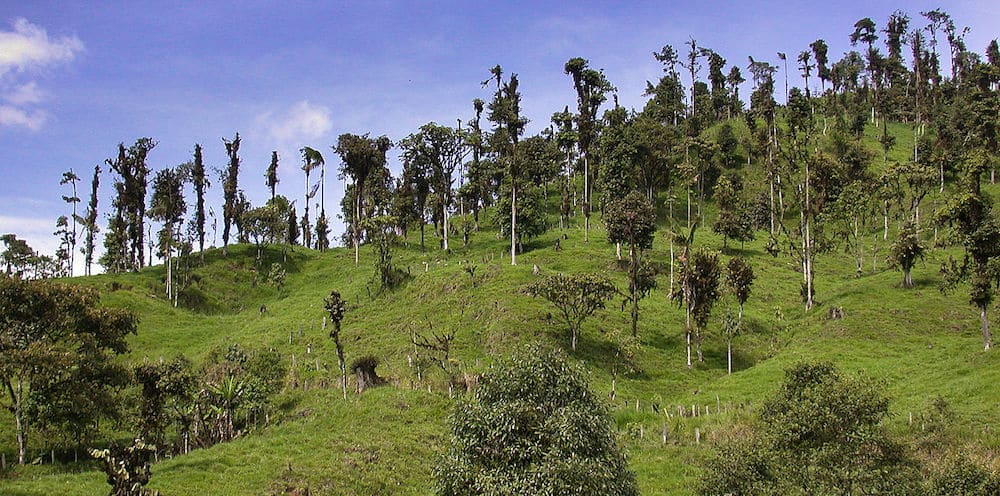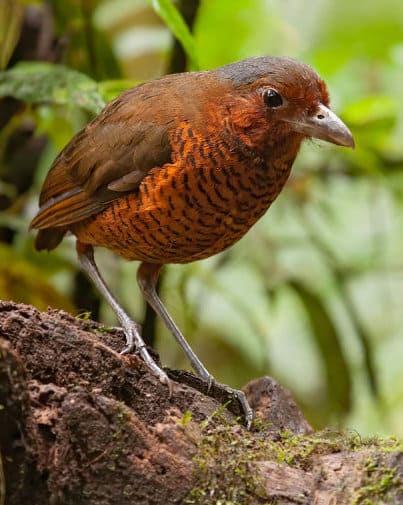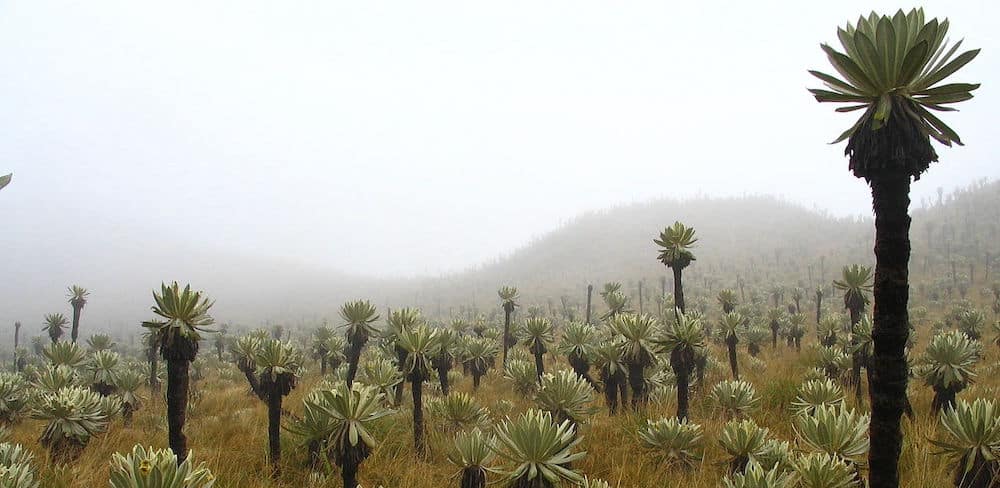Northern Ecuador

Birding Northern Ecuador
Only a few countries in the world are as diverse in their avifauna as Ecuador. The strategic position of being on the equator and being crossed by the Andes mountain chain makes for a unique geography, which is what has led to a variety of habitats that in turn result in biodiversity. From west to east, the three different land regions of Ecuador, well defined in geographic terms are: the Coast, the Andes range, and the East. There is a fourth – the island region of the Galapagos Islands.
The Northern area of the country covers all the 3 land regions and has two areas of high endemism. These Endemic Bird Areas are: the Choco and the Tumbesian endemic areas in the Coastal range, plus restricted range birds in the Highland Range and the Amazon Basin. The Choco Corridor, located in the Northwest of the country, is a hot spot and a wildlife refuge, which was not destroyed by the ice age. This area offers an authentic and wonderful opportunity for birdwatching to observe hundreds of neotropical exotic birds, including around 35 endemic birds. The Ecuadorian Choco Corridor is connected with the southwest of Colombia and comprises: Playa de Oro, Mache Chindul and the surrounding Tropical Choco Forest; Carretero Ibarra – San Lorenzo with different climate zones; Chiriboga Road and its surroundings; Rio Silanche with very few forested areas; Milpe Road and its environs (part of the Mashpi Protected Forest) have become part of the beautiful and diverse canyons systems of the Upper Tropical Choco region.

Dwindling Pinchincha Forest – ©Alex Wild CCO 1.0 via Wikimedia Commons
The immense Mindo-Nambillo Protected Forest has, for many years held the World Record Christmas Birding Count, with over 410 species in one day! Tandayapa Valley, which protects an outstanding intact subtropical forest and the Nono-Tandayapa-Mindo Road area, near Quito, to name a few spots amongst others, are said by many to be the best birding places on earth.From the west, and the coast, the region adds a huge variety of shore birds and coastal tropical birds, plus an interesting number of Tumbesian endemics. The Tumbesian Endemic Region starts in Southwest Ecuador running to the Northwest of Peru. Amazingly, from around the equator and in the Northwest of Ecuador there are numerous Tumbesian endemic birds.In other words, the Northwest area of Ecuador has about 1,000 bird species, including many endemics – all within an area 250 miles across (See map).In this extremely diverse region, there is everything from seashores, dry tropical forests, humid tropical forests, upland tropical forest, subtropical forest , Andean Valleys, dry inter-Andean forest, highland rainforest and even the cold high barren plains above the tree line (just behind Quito) the Andes western chain!
The Northwest Corridor has specialist birding lodges, all top quality, beginning in the Quito foothills in the Pichincha Mountains. The closest Natural Protected Area to Quito City is located just 15 minutes from the airport, and offers great birding from the very beginning. It’s a good option for the birders who do not want to lodge in the big city, who just enjoy nature and comfort from the moment they land in Ecuador. The Pichincha Protected Forest surrounds the capital city in the western mountains covering approximately 10.000 hectares and there are several private properties within it that obey all the ecological restrictions. Birding services in these very comfortable and historical haciendas are a must. There are many kilometres of private trails such as the pristine Singuna canyon that is dedicated to conservation and birdwatching. Four condors and c.120 highland species have been recorded in this protected mountain reserve just a few minutes from the centre of Quito. It is connected by farm roads and secondary roads to the ‘Nono-Tandayapa-Mindo’ Road. This allows birders to get an unbroken sequence of birds from the very highest barren plains to the subtropical and tropical regions.

Giant Antpitta Grallaria gigantea – ©Dubi Shapiro
Tandayapa Valley has a few birding lodges, all top quality with their own private reserves. The lower valley, because of its steepness, provides hikes on very well designed trails from 1500m to 2000m. This covers two different climate zones in few interesting hours walking. Hiking and Birdwatching in the Nono-Tandayapa-Mindo road provides wonderful birding surprises, as you will cover several different climatic zones. The road begins just behind Quito and finishes in the lower Tandayapa Valley where 550 bird species have been recorded. It is a Cloud forest with a very steep pristine environment protected by its owners. Most of the proprietors have a deep sense of conservation and have made it possible for an eco-dream to come true.Mindo ‘city’, is a small but very busy village, located in the heart of the enormous Mindo-Nambillo subtropical forest. You will find some top quality birding lodges with private reserves within the boundaries of the village and also a huge variety of cheap small hostels with shared bathrooms and B&B with private showers, all this mixed with all type of fast food places, restaurants, stores, bars, discos, bus stations, churches, a soccer field, orchid and butterflies farms, incredibly crowded waterfalls and dangerous cable cars, cock fighting, (even although it is illegal), frog ponds, roads that can get completely crowded and impossible for birding, especially during weekends and holidays. Massive visits of national tourism, schools, family groups, and motorcycles are all common during the festivals and all year round at the weekends.
15kms to the west, at 1000m, is Milpe Road, an ancient Yumbo, Indian religious sacred place from around 1500BC – Milpe Road is the opposite of its neighbour, so far it’s a quiet 8km-long road with no local village. Several farmland areas are mixed with the extremely diverse Upper Tropical Forests with their steep canyons that make for perfect birdwatching. The road is very quiet and runs along the sides of the Mashpi Upper Protected Canyons, covering around 15,000 hectares that, at last, is now protected by the state. There are few top quality birding lodges that are very comfortable, from ‘rustic de luxe’ to quality accommodations lodges with excellent private trail systems and lots of pristine waterfalls. Milpe, belongs to the Choco corridor, an endemic bird area that connects Tumbesian and Choco endemic birds is a remarkable HOT SPOT and Wildlife Refuge that survived the ice ages. It is a transitional area that spans the lower subtropics and the upper tropical areas, which is the reason for its amazing biodiversity. In a 15km area there are over 400 bird species. It is also an easy and extremely productive birding area, with a fresh 20C average temperature all year round – day and night. It is also home to lots of butterflies, moths and mammal species.The are some comfortable hotels as well as Spartan rooms in hostels, which can be found in Nanegalito, San Miguel de los Bancos, Pedro Vicente Maldonado, La Concordia, Quininde and Pedernales none of which are eco-villages.

El Angel National Park – ©Paramo at Dutch Wikipedia, CC BY-SA 3.0 via Wikimedia Commons
The heart of the Tropical Corridor is represented by the 10,000 hectare Playa de Oro Forest Preserve. This is managed by the local community and provides many endemic and other birds. Here there are basic logdes with good food. Here the trails are ok and reasonable well maintained that offer moderate to difficult birding.The Andes range is the most disturbed area in Ecuador, where most of the farms, cities and human settlements are located. Between the East and West Andes Chain is the inter Andean valley. There are small areas of natural private preserves and some national protected areas such as: Pasochoa National Park, to the South of Quito, the Pichincha Protected Forest in the Quito foothills (habitat of 4 Andean Condors), Jerusalem inter-Andean dry forest, the botanical reserve of Pululahua and El Angel National Park to the far north by the Colombian border. The Paramo (high barren plains) is highest zone of this range and is still pristine with native vegetation above the tree line. It is at a very high altitude – from 4,000m and above. There, you can find beautiful snowcapped volcanoes, mountains, and highland lakes, which are the boundaries of many National Parks that drop down to the Eastern Region – for example, Antizana and Cayambe Coca National Parks.
The eastern area – in particular the roads that lead to Quito – Pifo- Papallacta -Cuyuja – Borja – Baeza- Cosanga, Tena,Larupa, Hollin, Sumaco, Loreto, Coca and Amazon Basin there are well protected areas. Here are the borders of National Parks such as Antizana, Cayambe-Coca, Sumaco, Napo Galeras in the lower subtropics, including Cuyabeno Fauna Reserve and the hot spot and wildlife refuge Yasuni National Park in the Amazon Basin.The trails at Upper Sumaco are productive and generally the area has good birding everywhere. Cosanga Valley has a few birding lodges from basic to luxurious. This area is surrounded by pristine State Forests and provides moderate to difficult birding along the trails covered by enormous trees. Feeders and open areas are much better for easy birding. Antizana, Guacamayos, Sumaco, Cayambe Coca and some private reserves make this valley outstanding for birding. The area holds the World Record Christmas count with c.460 bird species!
Papallacta Pass is a must in this area for highland birds, along with the Antizana zone known for Condors and Black Faced Ibis. Surprisingly there are not too many lodges to choose at the beginning or middle part of this road. The attraction of hot springs, the highland and andean cloud forests and visiting different national parks in several climate zones is something special. Budget services are offered at Papallacta Village, some Spartan hostels. Higher end services are found in Borja, especially Baeza and Chaco. Archidona and Cosanga valley have specialized birding lodges and reserves.
Birding from the Paramo to the cloud forest is easy to moderate birding, while the Amazon Basin area makes it easy for you, birding the sides of the rivers or lakes edges. However, birding inside the lush and gigantic trees in the Amazon forest can be harder with more experience needed. There are some Amazon basin deluxe lodges located in pristine areas along the rivers and some budget hostels in Coca and other Amazonian cities.Northern Ecuador has brand new well-made roads that connect to all the remote areas. All the villages have electricity, potable water and phone service. Nearby, the cities and main villages offer fast medical service, when needed. There are many forms of transportation offered, from public buses to private safari birding vans tours. There is a diversity of lodges that have inexpensive shared bathrooms lodges up to rustic deluxe birding lodges.
For all relevant links see the Ecuador man page.
-
Dr Jorge Cruz
https://www.sanjorgeecolodges.com
